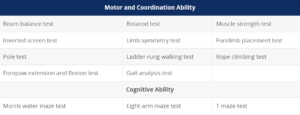Stroke, also known as transient ischemic attack or cerebrovascular accident, is an acute brain disease. Usually, a sudden rupture of a blood vessel in the brain or a blockage of a blood vessel that prevents blood from flowing to the brain can cause damage to brain tissue, resulting in a stroke.
Long-term strokes can lead to brain damage, disability and even death. The brain serves as a high-level nerve center that controls many aspects of the body, including sensation, cognition, and movement and the normal function of the brain requires oxygen. The blood vessels carry oxygen-rich blood to all parts of the brain. If a stroke occurs, brain cells will be damaged or even die within a short period of time, resulting in damage to the brain and the body will not be able to work properly. Screening and evaluation of safe and effective anti-stroke drugs can help in the treatment and prevention of the disease.
Approaches to the Evaluation of Anti-stroke Drugs
Anti-stroke drugs are usually evaluated in animal models of stroke for post-stroke motor and coordination abilities to determine whether the drug is effective in recovering from neurological damage after stroke. In addition, studies have shown that cognitive deficits after stroke can sustain beyond general sensorimotor function. Therefore, neurobehavioral evaluation of animal models of stroke also involves the evaluation of cognitive behavior.

Our company applies our specialized behavioral tests to the screening and safety assessment of anti-stroke drugs. We are committed to providing valuable reference results for our clients’ drug development projects. Our drug screening and evaluation process is described as follows.



